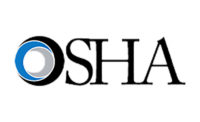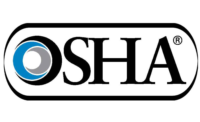One thing is fairly certain: even if President Obama is re-elected, chances are slim Dr. Michaels will remain at OSHA. In its 40+ year history, OSHA has never had a leader who stayed on for any part of the second term of an incumbent president.
Among the points Dr. Michaels made (or did not make in regard to standards):
In the 100-year history of the National Safety Council, U.S. workplaces have gone from carnage to at least compliance with safety laws in most cases.
OSHA is a public health agency.
OSHA has no intention of revisiting ergonomics and issuing another ergo standard.
A standard for silica dust exposures is complicated by exposure issues and no standard or even a proposal will be issued any time soon.
Injury and illness prevention programs, which Dr. Michaels apparently no longer refers to as I2P2 after mere talk about it from OSHA officials sparked heated debate, is a topic the OSHA chief still likes to talk about. He called these programs a step toward building a safety culture. Dr. Michaels made several references to Cal/OSHA’s version of an I2P2 standard, saying that the standard was cited in 25% of all Cal/OSHA inspections. The most common violation: simply not having a written injury and illness prevention program.
Dr. Michaels added that when Cal/OSHA cited specific violations of the injury and illness programs, such as not having an incident investigation process or a lockout-tagout program, there followed a 26% reduction in total recordable injuries at the cited workplace, according to a Rand Corporation study.
Dr. Michaels said not a word about any future standard-setting action regarding I2P2.
Incentive programs based on injury rates encourage non-reporting of injuries and distort and company’s view of its safety performance. In response to an audience question, Dr. Michaels said OSHA has no plans to set a standard outlining incentive program parameters, do’s and don’t’s, and outlawing “safety bingo” incentive games.
Dr. Michaels expressed real concern about workers being bullied into not reporting injuries or safety problems. He said OSHA knows of cases where employees who have spoken up have been disciplined by their management, and suspended in some cases. Knowing these possible consequences, many workers chose to remain silent.
Dr. Michaels is proud of OSHA’s education and outreach compliance assistance programs. He cited these stats: 200 million visitors came to OSHA’s website in FY 2011; OSHA received 33,000 email requests; and 200,000 people responded to OSHA’s toll-free 800 phone number in making calls for help.

